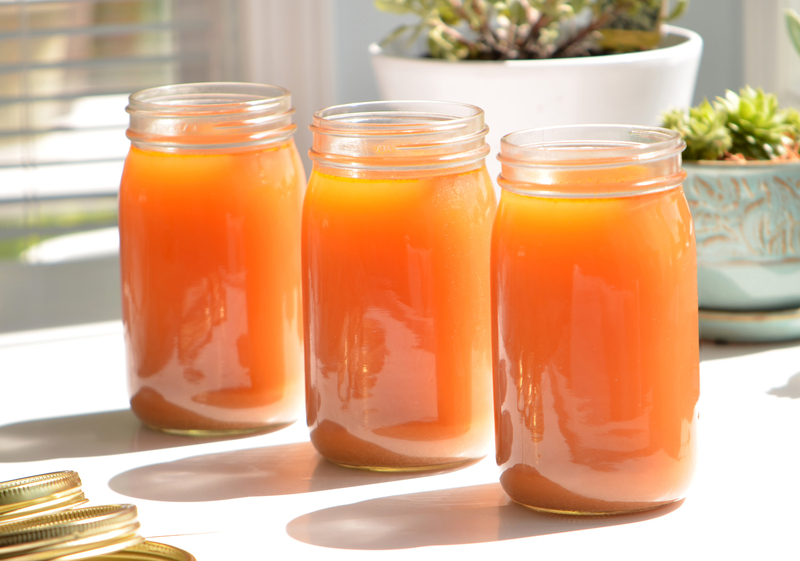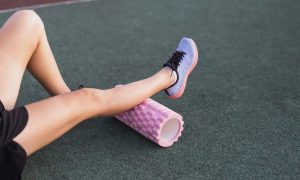Revolutionizing Performance Nutrition was the theme of 2021’s symposium for the Sports, Cardiovascular and Wellness Nutrition (SCAN) practice group. This subgroup of the Academy of Nutrition and Dietetics puts on one of the most highly respected sports nutrition conferences in the U.S. each year. As a dietitian for dancers, I am a member of SCAN and attended the conference this March. Here are my top takeaways.
The latest on bone density and preventing fractures
With stress fractures being one of the number one injuries in the dance community and with dancers being at higher risk for low bone mineral density (BMD), bone health is a top priority. Getting the bone-building nutrients through food is the best way for them to be absorbed, but sometimes supplements are advisable.
- Calcium (1500 mg per day total). Food sources are beans, greens, seeds, soy, tofu, tempeh, broccoli and cow’s milk. Supplements are better in smaller doses such as 250 mg at a time. Excess calcium in supplements (over 500 mg at a time) are not well absorbed and can interfere with the absorption of phosphorus and iron.
- Phosphorus (found in nuts, seeds, eggs, meats, cow milk, vegetables and legumes).
- Vitamin D3 (at least 800 mg, and some scientists feel that this number is too low).
- While vitamin K wasn’t specifically mentioned in this conference talk, dancers would do well to make sure they’re getting 4-7 servings per week of dark leafy greens.
Up to 90 percent of peak bone mass is reached by age 20, and weight-bearing, high-impact activity (petite allegro, for example) makes a significant difference in building bone. Relative energy deficiency in sport (RED-S) is when female and male athletes don’t eat adequate food to provide for their energy, growth and performance needs. Females may have menstrual irregularity (common in the dance field), but with RED-S, these hormonal changes affect bone density. It’s not just eating too few calories; it’s also going for too long at a time, particularly during class/rehearsals, that affect the living bone tissue. Low energy availability (not eating enough) also delays gastric emptying and increases gastrointestinal discomfort. In my practice, I’ve seen many dancers who go for five to seven hours at a time without eating during the day or skip meals and then have stomach pain or bloating. They often jump to conclusions that they need to cut out gluten or dairy without first addressing how their GI system is reacting to extreme energy deficiency first. One of my biggest messages to dancers is that eating regularly through their day, preferably in three-hour increments, is one of the best ways to boost performance, mood and, of course, bone density.
Collagen and bone broth: Are they worth it?
Collagen is popular and expensive, but the science isn’t yet clear on how beneficial it is for young, already healthy athletes. Collagen, gelatin and bone broth all come from cow, pig or marine animal’s connective tissues. They contain amino acids (mostly glycine), meaning they’re proteins. All proteins get digested and broken down in metabolism to their individual amino acids and reformed in the body to meet the body’s protein needs or collagen-building needs. Collagen is found in the human body in bones, skin, ligaments, tendons, between joints, and in the ears and nose. According to the presenter, bone broth and gelatin have the least impact on joint pain. It seems that these lack adequate amino acids to make much of a difference. Best to save your money on these pricy but watered down products. There is evidence that a dose of around 20 grams collagen with 50 mg vitamin C may help with joint pain and inflammation. Whether a young athlete will see a difference by taking collagen versus an older athlete is to be determined. Since collagen is an animal-derived product, it is not vegetarian or vegan.
Omega-3 fatty acids: More than just anti-inflammatory
Omega-3 fats (including EPA and DHA) are found in nuts, seeds, some algae and cold water fish, and are good for the cardiovascular system. We’ve known that they are anti-inflammatory, but new science shows that they also increase muscle protein synthesis, meaning they help build muscle in training athletes. Studies showed that 1.9 grams of EPA and 1.5 grams of DHA for four weeks showed an increase in muscle building. It took at least two weeks to initiate change and is best eaten 40-60 minutes pre- and post-exercise. Bring a pack of nuts with you to the studio, and add some ground flax or chia seeds to your oatmeal. The researcher recommends a food first approach versus a supplement. 2.5 grams up to 5 grams per day is their recommendation. Do not go overboard on these as supplements. They increase blood flow and reduce blood clotting time, so excess could lead to serious medical complications if the person got a cut or head injury.
What are the supplements with the most science to back up the claims?
#1. Beets, beetroot powders, beetroot juice. Naturally occurring nitrates turn to nitric oxide and act as a vasodilator, help with muscle contraction and oxygen capacity, and improve both endurance and speed performance.
#2. Caffeine. A little is performance enhancing, but too much is detrimental.
#3. Protein. I personally recommend eating protein through food and avoiding whey protein powders. If powder is necessary, stick to pea, hemp or soy. Protein powders have been shown to have high probability of contamination with heavy metals, BPA, pesticides and possibly substances that could interfere with an athlete’s ability to pass a blood test.
#4. Creatine. It could be effective for sprints or variations that focus on speed and jumping but only if the dancer is in a positive energy state, meaning they need to have eaten something. Creatine may increase cognitive ability and mental processing speed. It’s neuroprotective. Creatine does increase the water content of the muscles which in excess might make a dancer feel weighed down or less flexible. This is a good example of how a little can be good, but too much is detrimental.
CBD: Is there anything to the hype?
This product is everywhere and in everything, but buyer beware. The legality of CBD in food and supplements in the U.S. and UK is still not at all clear. Tests show that three out of 25 products have +/- 20 percent of the amount the label claims it has. Fifteen of the products were below the advertised amount, and two exceeded the amount. Synthetic cannabinoids that can be potentially dangerous were found in four out of 25 tested products. There are currently very few human trials on CBD specifically (not THC, which is a different compound in the plant), and they show no effect on muscle soreness or recovery. Medical applications use much higher doses than what are commercially available and are tested for safety first. Those do have side effects. In the UK, only 70 mg is considered safe. Until we know more, hold off on expensive CBD products.
Sleep: The ultimate performance enhancer
Chronic partial sleep loss leads to decreases in memory, attention, motor skills and motivation. Being awake for 16 hours is like having a blood alcohol level of 0.05 percent. Less than eight hours of sleep almost doubles injury rates. College athletes are three to four times more likely to contemplate suicide when sleep deprived. Light, especially blue light from cell phones and computers, disrupts circadian rhythms and pushes your natural desire to sleep later and later, making it harder to get up the next morning. Teens need eight to 10 hours of sleep, and athletes need more. Athletes who extended their sleep cycles showed a seven percent improvement in sprinting and had nine percent faster turnaround time for swimmers. Sleep loss leads to increased body weight. There is no question that adequate sleep impacts performance more than any supplement can.

By Emily C. Harrison MS, RDN, LDN of Nutrition for Great Performances.
Emily Cook Harrison MS, RD, LD
Emily is a registered dietitian and holds both a bachelor’s and master’s degree in nutrition from Georgia State University, USA. Her master’s thesis research was on elite level ballet dancers and nutrition and she has experience providing nutrition services for weight management, sports nutrition, disordered eating, disease prevention, and food allergies. Emily was a professional dancer for eleven years with the Atlanta Ballet and several other companies. She is a dance educator and the mother of two young children. She now runs the Centre for Dance Nutrition and Healthy Lifestyles. She can be reached at emily@dancernutrition.com
www.dancernutrition.com















